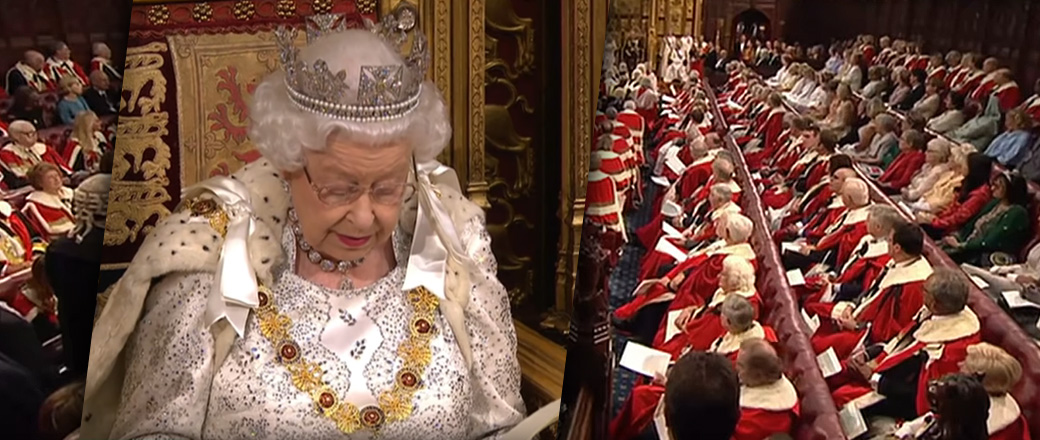Unless you’ve been completely living off-grid for the past three years, you’ll know that the United Kingdom’s, 2016, Brexit referendum is yet to be officially ratified.
The 2016 referendum saw the people of the United Kingdom vote in favour of leaving the European Union by 1,269,501 people. The final result ended with 51.9% (17.5 million) of those in the U.K voting to leave the E.U, while 48.1% (16.1 million) voted to remain [i].
The results uncovered a division between North and South. The majority in England and Wales chose to leave, while Northern Ireland and Scotland, still heralding a decent leave vote, had a majority choose to remain.
In subsequent years this divide has devolved into two camps from both sides. The first, called, Remainers. The second, Leavers.

Remainers want either no exit, a new referendum or a Brexit deal that waters down the U.K.’s exit from the E.U. On the flipside Leavers, want the referendum to be honoured, which means a clean, but respectful exit.
Given the referendum’s North vs. South outcome, and the Leave or Remain dichotomy, it’s easy enough to see why it’s taken three years for deliberations to even come close to ratifying the Brexit mandate handed to the U.K. Government.
There was a glimmer of Thatchian hope, when Theresa May took over from David Cameron, who had resigned as a direct result of the referendum outcome. However, political hurdles, comparisons to Neville Chamberlain’s “appeasement policy” and manoeuvring from Remainers, along with May’s own leadership faux pars ended up costing her the Prime Ministership.
Theresa May’s biggest mistake? ‘Not considering a no-deal Brexit a viable option.’ [ii] This is despite May all but penning the term “no-deal Brexit”, when ‘she repeatedly warned that “no deal is better than a bad deal.” [iii]
With May’s exit, hope of a resolution towards ratification now rests in the hands of Churchill fan, Boris Johnson; a man, suitable to the task at hand, but a man not without his own shortcomings. It’s now up to Johnson, and his team, to effectively lead the U.K. out of the E.U. by upholding the referendum result, and in doing so, preserving the integrity of constitutionally democratic mechanisms, such as referendums.
Of course, to do this, Johnson will still have to navigate the same waters as Theresa May. His biggest obstacles are obstructionists in his own party, the mainstream media, and the Marxists under Labour’s Socialist leader, Jeremy Corbyn.
Navigating those waters isn’t going to be easy, but as Johnson has shown in the face of overwhelming defeat, if it can be done, he plans to do it.
His first task was making the most of the Queen’s speech. What the Queen’s speech gives Johnson is an opportunity to communicate his plan to the U.K. people without it being filtered through the lens of the MSM, and all with the weight of the Queen’s voice behind it.
Traditionally, the Queen opens the new parliament year with a speech written by government ministers. The formal 10-minute speech is delivered on the throne in the House of Lords. From there the speech is debated for up to five days where it is then voted upon.
Johnson hasn’t wasted the opportunity. With an emphasis on the word “forward” (mentioned 11 times) the Queen outlined the Johnson government’s plan to move the U.K. beyond the division and stalemate of the past three years.
The speech was clear, easy to understand and had a 7 point, U.K. first tone:
- Leaving the European Union on 31 October, with an emphasis on seizing new opportunities delivered by a successful Brexit.
- Measures to further support Healthcare.
- Commitment to tackling violent crime, strengthening the criminal justice system and ensuring victims receive the support they need and the justice they deserve.
- Measures we will progress to ensure fairness and protection for individuals and families.
- Levelling up every corner of the United Kingdom through better education, infrastructure and science, renewing the ties that bind us together.
- Deepens our commitment to the natural environment and animal welfare.
- To Endeavour to drive forward work to deliver for every corner of the U.K. [iv]
These include two brilliant stand-out features, unpacked within the actual speech, which will appeal to both Remainers and Leavers.
The first, putting forward “an immigration bill, ending free movement, laying the foundation for a fair, modern and global immigration system.”
The second, “ensuring that resident European citizens, who have built their lives in, and contributed so much to, the United Kingdom, have the right to remain.” [v]
CNN are unsurprisingly pessimistic about Johnson’s ability to bring Brexit home, stating, ‘it’s hard to ignore the reality that this legislative agenda will probably never see the light of day in this Parliament. Rather, it seems a precursor to an inevitable general election.’
Their dismissive pessimism isn’t completely misplaced. As the BBC noted, although it is highly unusual for the Queen’s speech to be rejected, the Queen’s speech is not a complete guarantee that the government’s plan will be passed.
There’s no argument against this from me. Johnson is walking on thin ice. If he fails to win the Queen’s speech vote, he can call for an early election. If that fails, it is expected that he will be called on to resign.
The deadline for Brexit is the 31st October. To not ratify Brexit, and carry the debate beyond this date, is to hurt constitutional democracy in the U.K. Contempt for the 2016 referendum result, diminishes the importance of referendums, and in the process muzzles the voice of the people. If the healthy mechanisms of any constitutional democracy are to be protected from further erosion by enemies of freedom, rights and responsibilities, both within and without, Brexit must be ratified.
The Queen’s speech emphasises Johnson’s way forward. With it, he may have hit the right note needed to inspire the 16.1 million who didn’t vote in favour of Brexit and honour the voice of the 17.5 million who did.
References:
[i] The BBC, 2016. EU Referendum results. Sourced 15th October 2019.
[ii] Jim Pickard, Theresa May’s Five Big Mistakes: how they stacked up, Financial Times 25th May 2019. Sourced 15th October 2019
[iii] The Guardian, YouTube: Brexit: ‘No deal is better than a bad deal’ says Theresa May Sourced 15th October 2019
[iv] Gov.UK, Policy Paper: Queen’s Speech: What it means for you, 14th October 2019. Sourced, 15th October 2019.
[v] Michael Smith News, Queens Speech Transcript, 15th October 2019
























You must be logged in to post a comment.